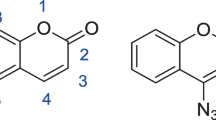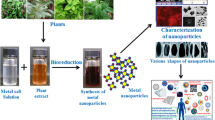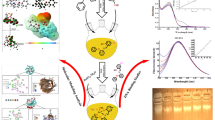Abstract
4-hydroxy-3,5-pyridinedicarboxylic acid (DQ58) and 4-hydroxy-1-methyl-3,5-pyridinedicarboxylic acid (DQ71508) have been synthesized, and their Fe(III), Al(III), Cu(II), and Zn(II) coordination properties have been studied by potentiometry, UV–Vis spectroscopy (in the case of Fe(III), Al(III), Cu(II)), 1H-NMR (for Al(III)) and EPR (for Cu(II)). The thermodynamic results were used to model the extent of the toxic metal ions decorporation (Fe(III) or Al(III)) in the presence of the essential metal ions (Cu(II) or Zn(II)). DQ58 and DQ71508 were demonstrated to interact with human serum albumin (HSA), which is assumed to be the main serum transporter of the chelators, and binding constants have been obtained by ultrafiltration. IC50 values of 5.185 × 10−3 and 1.033 × 10−3 mol·L−1 were collected after 24 and 48 h of treatment with DQ71508 towards human embryonic kidney HEK-293 cells, demonstrating the relatively low cytotoxicity of this compound. According to these results, both DQ58 and DQ71508 seem to be potential candidates for Fe chelation therapy, and DQ58 is a better Fe(III) chelator than DQ71508.






Similar content being viewed by others
References
Nurchi, V.M., Crisponi, G., Lachowicz, J.I., Medici, S., Pean, M., Zoroddu, M.A.: Chemical features of in use and in progress chelators for iron overload. J. Trace Elem. Med. Biol. 38, 10–18 (2016)
Toso, L., Crisponi, G., Nurchi, V.M., Crespo-Alonso, M., Lachowicz, J.I., Mansoori, D., Arca, M., Santos, M.A., Marques, S.M., Gano, L., Niclos-Gutierrez, J., Gonzalez-Perez, J.M., Dominguez-Martin, A., Choquesillo-Lazarte, D., Szewczuk, Z.: Searching for new aluminium chelating agents: A family of hydroxypyrone ligands. J. Inorg. Biochem. 130, 112–121 (2014)
Hider, R.C., Kong, X.: Iron: effect of overload and deficiency. In: Sigel, A., Sigel, H., Sigel, R.K.O.: Interrelations Between Essential Metal Ions and Human Diseases (Metal Ions in Life Sciences, volume 13), pp. 229–294. Springer, Heidelberg (2013)
Crisponi, G., Dean, A., Di Marco, V., Lachowicz, J.I., Nurchi, V.M., Remelli, M., Tapparo, A.: Different approaches in the study of chelating agents for iron and aluminium overload pathologies. Anal. Bioanal. Chem. 405, 585–601 (2013)
Liu, Z.D., Hider, R.C.: Design of clinically useful iron(III)-selective chelators. Med. Res. Rev. 22, 26–64 (2002)
Dean, A., Ferlin, M.G., Cvijovic, M., Djurdjevic, P., Dotto, F., Badocco, D., Pastore, P., Venzo, A., Di Marco, V.B.: Evaluation of 1,2-dimethyl-3-hydroxy-4-pyridinecarboxylic acid and of other 3-hydroxy-4-pyridinecarboxylic acid derivatives for possible application in iron and aluminium chelation therapy. Polyhedron 67, 520–528 (2014)
Balogh, M., Hermecz, I., Mészaros, Z., Simon, K., Pusztay, L., Horváth, G., Dvortsak, P.: Studies on chemotherapeutics I. Synthesis of 5-substituted-4-oxo-1,4-dihydro-3-pyridinecarboxylic acid derivatives. J. Heter. Chem. 17, 359–368 (1980)
Dean, A., Sija, É., Zsigó, É., Ferlin, M.G., Marton, D., Gandin, V., Marzano, C., Badocco, D., Pastore, P., Venzo, A., Bertani, R., Kiss, T., Di Marco, V.: Possible chelating agents for iron and aluminium: 4-hydroxy-5-methyl-3-pyridinecarboxylic acid and 1,5-dimethyl-4-hydroxy-3-pyridinecarboxylic acid. Eur. J. Inorg. Chem. 1310–1319 (2013)
Di Marco, V.B., Tapparo, A., Bombi, G.G.: Complex formation between aluminium(III) and two hydroxyaromatic ligands: 2-hydroxyphenylethanone and 2-hydroxybenzeneacetic acid. Ann. Chim. (Rome) 89, 397–407 (1999)
Di Marco, V.B., Tapparo, A., Bombi, G.G.: New possible chelating agents of clinical interest for iron(III): 2-hydroxynicotinic acid and 3-hydroxypicolinic acid. A thermodynamic study. Ann. Chim. (Rome) 91, 595–603 (2001)
Irving, H.M., Miles, M.G., Pettit, L.D.: A study of some problems in determining the stoichiometric proton dissociation constants of complexes by potentiometric titrations using a glass electrode. Anal. Chim. Acta 38, 475–481 (1967)
Di Marco, V.B., Tapparo, A., Bombi, G.G.: Complex formation between aluminium(III) and two pyridine derivatives: 2-hydroxynicotinic and 3-hydroxypicolinic acid. Ann. Chim. (Rome) 89, 535–546 (1999)
Di Marco, V.B.: Ph. D. Thesis, University of Padova (1998)
Zékány, L., Nagypál, I., Peintler, G.: PSEQUAD for Chemical Equilibria. Technical Software Distribution, Baltimore (1991)
Rossotti, F.J.C., Rossotti, H.: The determination of stability constants and other equilibrium constants in solution. Mc Graw–Hill Book Company Inc., New York (1961)
Öhman, L.O., Sjöberg, S.: The experimental determination of thermodynamic properties for aqueous aluminum complexes. Coord. Chem. Rev. 149, 33–57 (1996)
Flynn Jr., C.M.: Hydrolysis of inorganic iron(III) salts. Chem. Rev. 84, 31–41 (1984)
Öhman, L.O.: Stable and metastable complexes in the system H+–Al3+citric acid. Inorg. Chem. 27, 2565–2570 (1988)
Covington, A.K., Paabo, M., Robinson, R.A., Bates, R.G.: Use of the glass electrode in deuterium oxide and the relation between the standardized pD (paD) scale and the operational pH in heavy water. Anal. Chem. 40, 700–706 (1968)
Enyedi, É.A., Farkas, E., Dömötör, O., Santos, M.A.: Interaction of folic acid and some MMP inhibitor folate-γ-hydroxamate derivatives with Zn(II) and human serum albumin. J. Inorg. Biochem. 105, 326–335 (2011)
Alley, M.C., Scudiero, D.A., Monks, A., Hursey, M.L., Czerwinski, M.J., Fine, D.L., Abbott, B.J., Mayo, J.G., Shoemaker, R.H., Boyd, M.R.: Feasibility of drug screening with panels of human tumor cell lines using a microculture tetrazolium assay. Cancer Res. 48, 589–601 (1988)
Di Marco, V.B., Dean, A., Ferlin, M.G., Yokel, R.A., Li, H., Venzo, A., Bombi, G.G.: Methyl-hydroxypyridinecarboxylic acids as possible bidentate chelating agents for aluminium(III): synthesis and metal–ligand solution chemistry. Eur. J. Inorg. Chem. 1284–1293 (2006)
Di Marco, V.B., Yokel, R.A., Ferlin, M.G., Tapparo, A., Bombi, G.G.: Evaluation of 3,4-hydroxypyridinecarboxylic acids as possible bidentate chelating agents for aluminium(III): synthesis and metal–ligand solution chemistry. Eur. J. Inorg. Chem. 2648–2655 (2002)
Kiss, T., Farkas, E.: The bioinorganic chemistry of aluminium. Perspec. Bioinorg. Chem. 3, 199–250 (1996)
Sija, É., Dean, A., Jakusch, T., Di Marco, V.B., Venzo, A., Kiss, T.: Interactions of pyridinecarboxylic acid chelators with brain metal ions: Cu(II), Zn(II), and Al(III). Monatsh. Chem. 142, 399–410 (2011)
Wu, Y., Mu, Y., Bai, L., Guo, S., Zhao, J., Li, D.: Synthesis, crystal structures, and magnetic properties of two Cu(II)-complexes based on in situ generated 5-NO2-2-hydroxyisophthalic acid. J. Coord. Chem. 67, 1629–1638 (2014)
Li, S., Liu, J., Guo, J., Ji, L., Song, W., Ma, D.: Construction of two novel 2D coordination frameworks with the ligand H3nbtc: synthesis, crystal structures, and luminescence. Z. Anorg. Allgem. Chem. 638, 832–837 (2012)
Zhu, X., Wang, N., Li, B., Zhang, H., Luo, Y., Pang, Y., Tian, D.: Syntheses, crystal structures, and magnetic properties of four novel Cu(I/II) complexes. Inorg. Chim. Acta 383, 235–243 (2012)
Crisponi, G., Remelli, M.: Iron chelating agents for the treatment of iron overload. Coord. Chem. Rev. 252, 1225–1240 (2008)
Di Marco, V.B., Tapparo, A., Dolmella, A., Bombi, G.G.: Complexation of 2-hydroxynicotinic and 3-hydroxypicolinic acid with zinc(II). Solution state study and crystal structure of trans-diaqua-bis-(3-hydroxypicolinato)zinc(II). Inorg. Chim. Acta 357, 135–142 (2004)
Reinhold, J.G.: Trace elements - a selective survey. Clin. Chem. 21, 476–500 (1975)
Acknowledgements
This work was supported by University of Padova, ‘‘Progetto Ateneo 2008, CPDA083904/08, 54000 €’’. We thank Nicola Bianchetto, Annamaria Cassini, Maristella Feltracco, Maria Zulpo (University of Padova), and Nelli Suba (University of Szeged), for their excellent work. The research was supported by the National Research, Development and Innovation Office-NKFIH through project GINOP-2.3.2-15-2016-00038.
Author information
Authors and Affiliations
Corresponding author
Electronic supplementary material
Below is the link to the electronic supplementary material.
Rights and permissions
About this article
Cite this article
Dean, A., Ferlin, M.G., Carta, D. et al. 4-Hydroxy-3,5-pyridinedicarboxylic Acids: Synthesis, Complexation Properties Towards Fe(III), Al(III), Cu(II), Zn(II), Human Serum Albumin, and Cellular Toxicity. J Solution Chem 47, 92–106 (2018). https://doi.org/10.1007/s10953-018-0709-0
Received:
Accepted:
Published:
Issue Date:
DOI: https://doi.org/10.1007/s10953-018-0709-0




